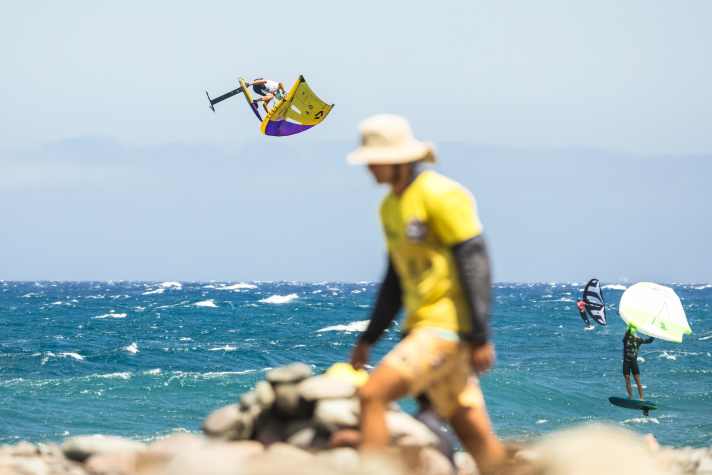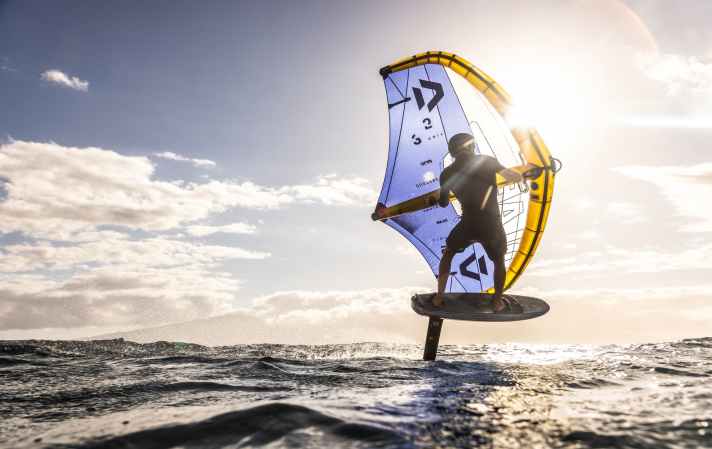Foils: Which fuselage length makes sense? Tips from pro Benjamin May




Foils from the various foil suppliers usually consist of individual components that can be combined and interchanged. The length of the fuselage, i.e. the longitudinal beam on which the wings are mounted, has a particularly large influence on the riding characteristics. Professional Benjamin May explains how the handling behaviour changes with shorter and longer variants.
Benjamin, when you look in your foil bag, you can see two lengths of fuselage - 60 and 66 centimetres. These are lengths that are often used by hobby foilers. What do these two lengths mean to you?
The 60 mm is the fuselage I use most of the time. Why? The 60 is perfect for jumping and I'm just as enthusiastic in the waves. And the special thing is that I can also do great tricks in the waves with the 60. You can also jump with the 66, but the reactivity is lower compared to the 60, but it has greater stability and more glide.
What does "stability" mean?
I am referring to the stability in the longitudinal axis. The longer fuselage provides more stability because you have a longer lever as the stabiliser is positioned further back. This means that the whole system flies more smoothly and is easier to control.

You said that the 60 fuselage was more "reactive" compared to the 66. What do you mean by that?
Yes, that's a good question! In terms of freestyle, it means that you only need a shorter amount of time to jump. What do I mean by that? The moment I go down on my knees to initiate the jump to the moment the foil leaves the water is shorter. That may only be a fraction of a second, but it quickly adds half a metre in height, which is obviously a lot. To be honest, "more reactive" also means that the 60 fuselage is more nervous compared to the 66 and you have to steer more sensitively.
Which fuselage do you recommend for wingfoilers who, for example, have an 1100 wing under their feet and are travelling on lakes as "freeriders" - i.e. not so much jumping, but rather jibing, tacking and doing other tricks on flat water?
Definitely the longer 66 fuselage, because, as I said, it is not quite as agile, but provides more stability - even in waves. The glide is also better because you have more leverage, which means that you have better planing and planing characteristics when foiling small swells. And it's not as if you can't jump with the 66 fuselage.

And what if these freeriders want to go out on the North Sea in a wave breaking one or two metres? Would they be better served with a short fuselage?
Not necessarily! This year I also have a 66 fuselage for the wave, because when you surf in breaking waves, there is always turbulence underwater that can throw you off course. Here too, a slightly longer fuselage helps to avoid stalling. With a short 60, I can of course make even tighter turns in the wave, but at a certain point they become "too tight", making them more uncontrolled. It's a bit like skiing: You have to find the turn transition coming out of the turn in order to make a clean next turn.
Fuselages are available in both aluminium and carbon versions. What do you recommend for the different areas of use?
For me, the easiest way to answer this question is for the freestyler target group: the carbon version offers advantages. When I ride a 650 front wing, for example, I notice that the foil with a carbon fuselage has a good deal more power. The diameter is smaller, which reduces the "drag", i.e. the resistance in the water. When I go out in the waves, I usually ride the aluminium version because of the one or other reef contact. Only when I'm riding very big and fast waves do I like to go for the carbon version, because it's thinner and faster. This also applies to freeriders: if you're cruising "normally" and making manoeuvres, you don't need a carbon fuselage. But as soon as you want to race, the carbon version has advantages again.

